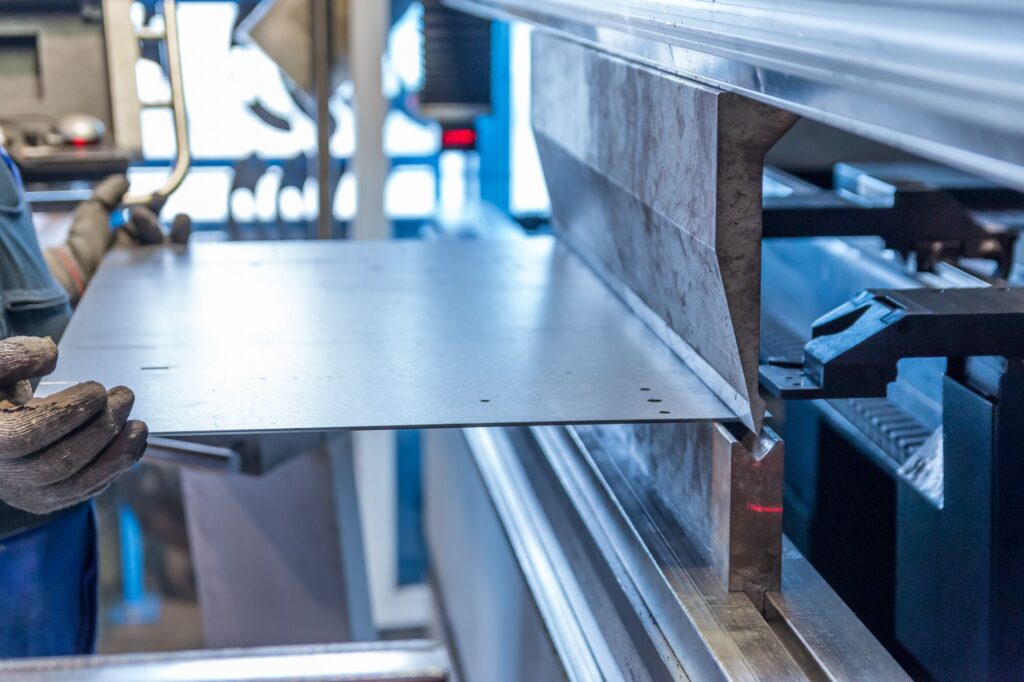Ingenious Fads in Steel Construction: Enhancing Longevity and Accuracy
In the world of steel construction, the search of toughness and accuracy has actually led to a wave of innovative fads that are improving the industry. These trends are not just shaping the existing however also laying the groundwork for the future of steel fabrication, guaranteeing further improvements in sturdiness and accuracy.
Advanced Welding Technologies
In the realm of steel construction, the fostering of sophisticated welding modern technologies has significantly reinvented the industry's technique to accomplishing exceptional high quality and precision in architectural welds. Advanced welding innovations, such as laser beam of light welding and friction stir welding, have actually emerged as game-changers in the field. By leveraging these innovative welding techniques, steel producers can boost the sturdiness, stamina, and accuracy of their architectural welds, fulfilling the progressively demanding requirements of contemporary building tasks.
Robot Automation in Construction
Accepting robot automation has actually come to be a keystone of modern steel manufacture practices, enhancing processes and improving performance across the market. Robotics are transforming the way steel parts are produced, providing unrivaled accuracy and speed while minimizing human error. These automated systems can deal with recurring jobs with consistent precision, leading to higher top quality end products.
One key advantage of robotic automation in steel manufacture is the capability to work around the clock without fatigue, dramatically enhancing manufacturing result. This constant procedure minimizes downtime and speeds up task timelines, ultimately conserving prices for makers. In addition, robotics can be programmed to carry out elaborate jobs that might be difficult or dangerous for human workers, improving safety and security in the workplace.
Moreover, robot automation makes it possible for seamless assimilation with other digital modern technologies, such as computer-aided design (CAD) software program and Internet of Things (IoT) systems (metal fabrication melbourne). This interconnected method boosts interaction in between different stages of manufacture, optimizing workflows and making sure real-time tracking and control. As the steel manufacture industry remains to progress, robot automation attracts attention as a transformative pressure driving efficiency and precision in producing procedures

High-Strength Alloy Advancement
The development of high-strength alloy advancement in steel construction is reshaping the sector's strategy to enhancing product durability and performance. High-strength alloys are engineered to show remarkable mechanical properties, such as boosted tensile stamina, durability, and deterioration resistance contrasted to standard steel qualities. By integrating these sophisticated alloys into manufacture procedures, makers can create components that endure higher stress levels and rough settings, causing more trustworthy and long lasting final result.
One key advantage of high-strength alloy advancement is the capability to decrease product thickness without endangering architectural integrity. This not just causes lighter-weight elements but additionally adds to cost financial savings and enhanced performance in fabrication and setting up processes. The her response boosted strength-to-weight ratio of these alloys permits for the design and building and construction of structures with greater load-bearing capacities while decreasing general weight.
3D Modeling and Simulation Software Program
Developments in steel fabrication procedures have actually been substantially propelled by the combination of cutting-edge 3D modeling and simulation software application tools. These tools enable makers to create in-depth virtual models of their tasks, enabling them to imagine the last product with precision before any kind of manual labor starts. By imitating various anxiety aspects, ecological conditions, and structural tons, makers can maximize layouts for enhanced toughness and efficiency. Additionally, 3D modeling and simulation software improve the manufacturing process by determining possible concerns early on, decreasing the requirement for pricey rework and reducing product waste.

Lasting Practices in Steel Manufacturing
Including lasting techniques right into steel manufacturing processes is essential for lessening environmental effect and ensuring lasting resource accessibility. One key sustainable technique is the adoption of energy-efficient innovations to minimize greenhouse gas discharges throughout the steel manufacturing procedure. This consists of using eco-friendly power resources, such as solar or wind power, to power steel plants and executing energy-efficient tools to maximize energy usage.
Another critical aspect of sustainable steel manufacturing is the liable sourcing of resources. This includes guaranteeing that the iron ore and various other sources used in steelmaking are acquired from ecologically friendly and ethical sources. By advertising openness in the supply chain and sticking to strict ecological criteria, steel manufacturers can reduce the unfavorable effects of source extraction on regional ecological communities and areas.

Verdict
To conclude, the cutting-edge fads in steel manufacture such as sophisticated welding innovations, robotic automation, high-strength alloy growth, 3D modeling and simulation software application, and sustainable practices are boosting the longevity and precision of steel items. These improvements are transforming the steel manufacture industry look at this now by enhancing sustainability, performance, and high quality. It is clear that the future of steel construction lies in welcoming these advanced modern technologies to satisfy the needs of contemporary building and construction and production industries.
In the realm of steel manufacture, the quest of durability and accuracy has led to a wave of innovative patterns that are improving the industry.In the world of steel manufacture, the adoption of sophisticated welding innovations has actually considerably reinvented the industry's method to attaining exceptional top quality and precision in architectural welds. As the steel manufacture industry continues to progress, robotic automation stands out as a transformative pressure driving performance and precision in producing procedures.
In addition, reusing and reusing steel scrap and waste products play a significant function in improving the sustainability of steel manufacturing. metal fabrication melbourne.In final thought, go to my blog the cutting-edge fads in steel manufacture such as advanced welding technologies, robotic automation, high-strength alloy growth, 3D modeling and simulation software application, and lasting techniques are boosting the durability and precision of steel products